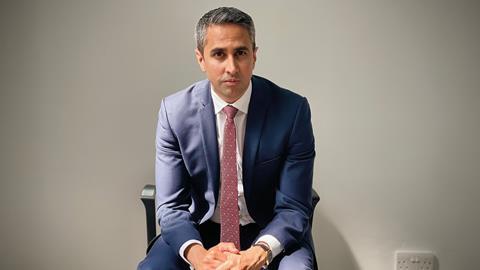My journey to law was driven by a strong sense of justice and a desire to help people. My mum was a care support worker and my dad a nurse, so I knew I wanted a career that involved helping others. Law proved to be the route, even though I never believed I could be a lawyer. It wasn’t something that people in my family did. At school, a teacher told me that I shouldn’t even try for a career in law as it was meant for other people. Regardless, faced with that prejudice I thought ‘let’s go for it’. Thankfully, things have changed significantly in the profession and it is more inclusive.
I went to a state school in north London and was fortunate enough to get a place studying law at Keele University. I then got a job clerking at a firm in Islington, which led to a full-time position as a caseworker, predominantly involved in appellate work before the tribunal and the Court of Appeal. I gained a lot of experience in judicial reviews.
Being at a small firm was the best training I could have hoped for. I had to learn and hone my skills quickly to deal with complex cases with serious consequences. It was training at the sharp edge of the law with no safety net. I was confident in my ability and quickly began taking the lead on significant cases. I was involved in the then developing area of the use of closed material. I was the lead solicitor in the country guidance case concerning the risk of return of failed asylum seekers to the Democratic Republic of the Congo. A highlight included preparing 20+ judicial review applications overnight and obtaining an emergency injunction to prevent the departure of a chartered flight. This resulted in a general stay of removal to the DRC pending the outcome of the country guidance case.
'I wanted a career that involved helping others… though I never believed I could be a lawyer. At school, a teacher told me that I shouldn’t even try for a career in law as it was meant for other people. Thankfully, things have changed significantly'
My sense of justice and fairness gained from that work continued when I moved seats to litigation working alongside Mr Stanley Saffer. He trusted me to advance arguments drawing on my experience in public law. I qualified as a solicitor specialising in litigation and not long after was made a partner.
I joined Ronald Fletcher Baker in 2011 as it was looking to establish a litigation department from the Baker Street office. Since joining I have been able to train and develop solicitors to look at litigation differently. I was also able to implement a ‘network of teams’ approach. This provides the best platform for supporting equity, diversity and inclusion.
I wanted to help people and use my passion for law for that purpose. I am particularly proud of helping the Bloomsbury Institute in its challenge against the Office for Students. Bloomsbury Institute is a private educational establishment with a mission to widen participation in education. Many of its students are from disadvantaged backgrounds. Refusal of registration would have effectively closed the institution. I was able to obtain a decision-making guidance document that the Court of Appeal had found was unlawful, reversing the OfS decision and rescuing the institute.
Helping the Ahmeds in the Supreme Court was the highlight of my career. Lifestyle Equities v Ahmed concerned a successful family-run company. A small part of the business involved selling items which were later found to have infringed the Beverly Hills Polo Club trade mark. The brother and sister directors had acted in good faith and taken advice but they made a mistake and infringed a trade mark. For the company this was a strict liability tort. The law (as it then was) meant that directors acting in good faith would also likely be strictly liable. The Ahmeds were faced with bankruptcy as BHPC sought to make them jointly liable for the deemed profits of the company amounting to about £4m.
It was important to help find a way to undo the injustice. It meant unpacking 150 years’ worth of settled case law. The case was a special moment for me as it was an expression of the ‘network of teams’ approach between the clients, silks, junior barristers, and the partners and solicitors in my department. Faced with a century of case law against you, sometimes the correct approach is to simply say ‘let’s go for it’.
































No comments yet